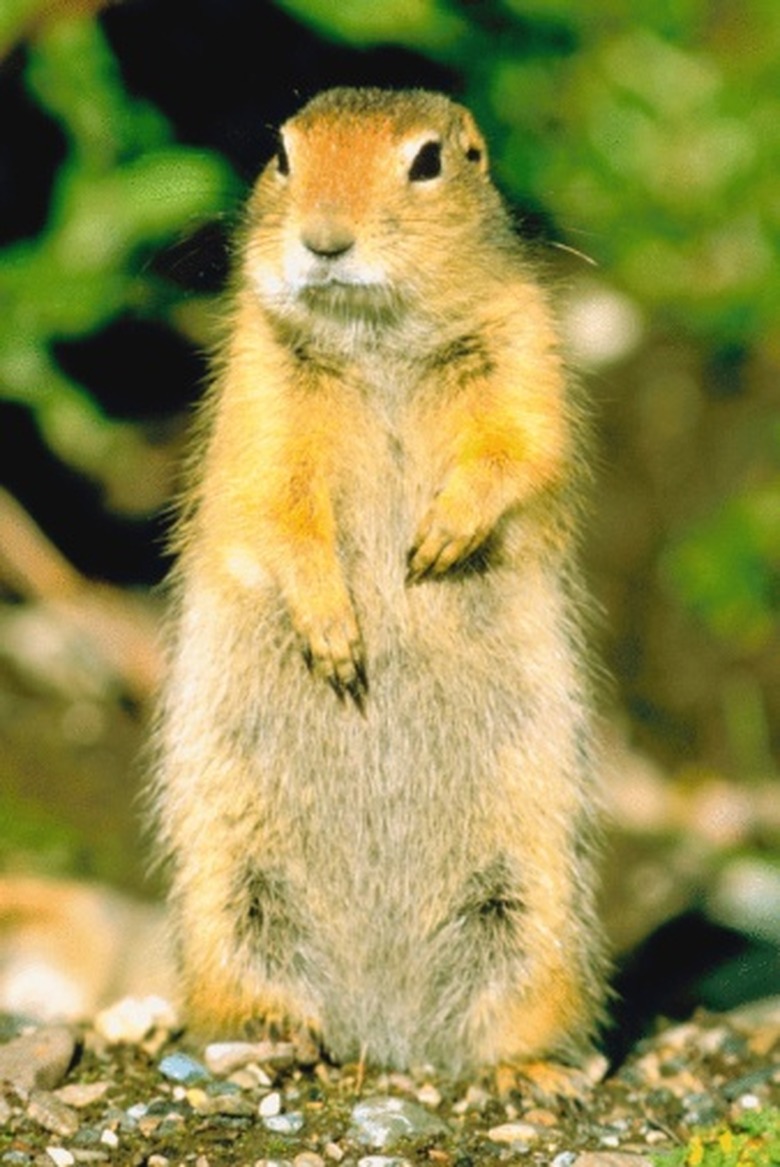How To Kill Ground Squirrels
They kill our trees, destroy our gardens and cause millions of dollars in damage a year to our levees. They are ground squirrels and their population is on the rise. In a study conducted by the University of California Statewide Integrated Pest Management Program, an estimated 123 squirrels removed approximately 1,800 pounds of crop per acre in just 44 days. A focus on reducing the population has come about due to the ground squirrel's destructive nature and diseases they harbor like bubonic plague, transmitted to humans through fleas. Precautions can be taken or extermination may be necessary in an effort to reduce the ground squirrel population.
Step 1
Prevent habitation. Deep tillage prevents excessive populations and should be done whenever a field is taken out of production. It is most effective if done in late fall and prior to the first frost to prevent the ground squirrels from hibernating for the winter.
- They kill our trees, destroy our gardens and cause millions of dollars in damage a year to our levees.
- A focus on reducing the population has come about due to the ground squirrel's destructive nature and diseases they harbor like bubonic plague, transmitted to humans through fleas.
Step 2
Use ultrasound devices. High frequency devices emit high pitched disturbing sounds heard only by animals. When sending this sound wave across the property, the ground squirrel will avoid the sound and move away. This high tech method is more effective on newly active colonies.
Step 3
Place baits in burrow. Place anticoagulant baits such as chlorophacinone or diphacinone frequently in the burrow, assuring regular feedings for five consecutive days. Refrain from grain baiting after you have used anticoagulants. Baits are most effective after spring and before summer.
- High frequency devices emit high pitched disturbing sounds heard only by animals.
- Place anticoagulant baits such as chlorophacinone or diphacinone frequently in the burrow, assuring regular feedings for five consecutive days.
Step 4
Apply dried coyote urine. The scent of the coyote will send the ground squirrel away from the area, since coyotes hunt and feed on the ground squirrel. Apply urine along property lines and fences. Use 1 to 2 ounces for every 10 to 20 feet. Because rain breaks the scent, the product should be reapplied monthly.
Step 5
Drop smoke bomb tablets in each squirrel hole. Place Phostoxin tablets or gas sticks in each hole and then seal the hole that is smoking by stomping it with your feet. Gas cartridges are sometimes preferred since they help identify burrow systems by showing more than one smoking in the same system. When using Phostoxin, avoid cold dry soils which will prevent penetration. Place the pellets in every hole due to difficulty in identifying which holes belong to the same burrow system.
- The scent of the coyote will send the ground squirrel away from the area, since coyotes hunt and feed on the ground squirrel.
- Place the pellets in every hole due to difficulty in identifying which holes belong to the same burrow system.
Step 6
Shoot the remaining squirrels. Shooting can be useful if coupled with fumigants, but should be a last resort. Not only is it not cost effective (because of the time it takes), but squirrels quickly become gun-shy, making it even more of a challenge. Shooting is best for smaller populations or best used on the remaining survivors after anticoagulants have been utilized. Shooting but must be done conservatively and with caution. Check the laws in your state. When shooting the remaining squirrels, section off the field and focus on small areas in one- to two-acre grids.
- Shoot the remaining squirrels.
- Shooting is best for smaller populations or best used on the remaining survivors after anticoagulants have been utilized.
